Description
Name in North American Boletes: Leccinum oxydabile, AND roseofractum, AND rotundifoliae, AND scabrum
Genus: Leccinum
Species: scabrum
- Species 2: oxydabile
- Species 3: roseofractum
- Species 4: rotundifoliae
Common Name: “Birch Bolete”
- Common Name 2: “Birch Scaber Stalk”
- Common Name 3: “Common Scaber-Stalk”
- Common Name 4: “Brown Birch Bolete”
Tells: Classic salt & pepper stem. Whitish pores age to gray-brown & may slowly bruise to yellow- or olive-brown. Favors birch but also found with oak and other hardwoods.
Other Information: CAP: Varies annoyingly from concave in youth to broadly convex in age, & any color from white or buff-pink through yellow-brown to brown-black. PORES: Can be quite deep. STEM: Scabers often start pale & darken w/age & toward base. Stem may also have distinct blue-green stains by base or yellowish tones higher up. FLESH: White cap flesh often DNS; may stain pink, brown, burgundy- or purplish-gray; and if it stains, may or may not resolve to violet-gray or black. Grrr. Oh yes: the stem flesh has been known to stain blue by the base. Double grrr. ENVIRONMENT: Likes birch, but not exclusively. OTHER: There are many lookalikes and the whole Leccinum genus is sort of up-in-the-air until DNA testing identifies some more useful patterns. If you’re in California, L. montanum is a particularly common lookalike that grows under aspen.
Science Notes: DNA tests have merged no less than three (3!) species into scabrum. You can find the departed names in North American Boletes at L. oxydabile, L. roseofractum, and L. rotundifoliae.
Edibility: Good.
CHEMICAL TESTS:
- NH4OH (Ammonia): No reaction.
- KOH: Cap skin and flesh both turn reddish brown.
- FeSO4 (Iron Salts): Cap skin and flesh both turn slate gray, usually w/bluish or greenish tints.
Links:
 |
578 |  |
332
334 |
 |
210 (oxydabile)
212 (roseofractum) 213 (rotundifoliae) 214 (scabrum) |
 |
265 |

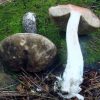

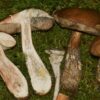
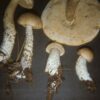
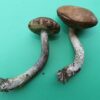
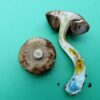
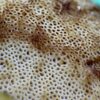
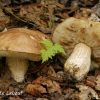
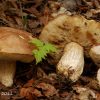
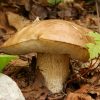
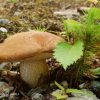
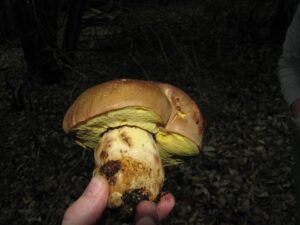
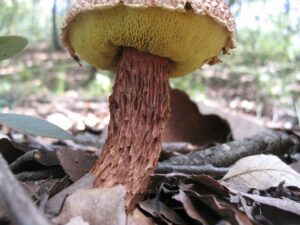
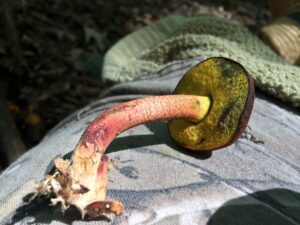

Got something to discuss?